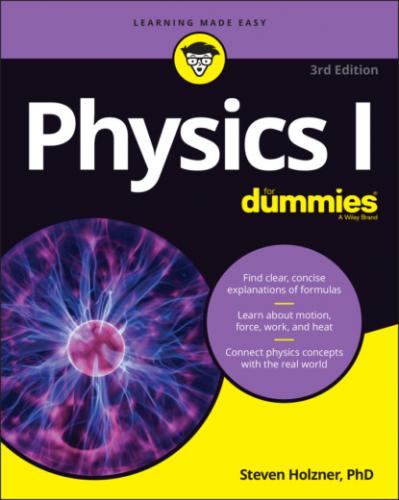Chapter 3
Exploring the Need for Speed
IN THIS CHAPTER
There you are in your Formula 1 racecar, speeding toward glory. You have the speed you need, and the pylons are whipping past on either side. You’re confident that you can win, and coming into the final turn, you’re far ahead. Or at least you think you are. Seems that another racer is also making a big effort, because you see a gleam of silver in your mirror. You get a better look and realize that you need to do something — last year’s winner is gaining on you fast.
It’s a good thing you know all about velocity and acceleration. With such knowledge, you know just what to do: You floor the gas pedal, accelerating out of trouble. Your knowledge of velocity lets you handle the final curve with ease. The checkered flag is a blur as you cross the finish line in record time. Not bad. You can thank your understanding of the issues in this chapter: displacement, velocity, and acceleration.
You already have an intuitive feeling for what we discuss in this chapter, or you wouldn’t be able to drive or even ride a bike. Displacement is about where you are, speed is about how fast you’re going, and anyone who’s ever been in a car knows about acceleration. These characteristics of motion concern people every day, and physics has made an organized study of them. This knowledge has helped people to plan roads, build spacecraft, organize traffic patterns, fly, track the motion of planets, predict the weather, and even get mad in slow-moving traffic jams. Understanding movement is a vital part of understanding physics, and that’s the topic of this chapter. Time to move on.
Going the Distance with Displacement
When something moves from Point A to Point B, displacement takes place in physics terms. In plain English, displacement is a distance in a particular direction.
In this section, we cover position and displacement in one to three dimensions.
Understanding displacement and position
You find displacement by finding the distance between an object’s initial position and its final position. Say, for example, that you have a fine new golf ball that’s prone to rolling around, as shown in Figure 3-1. This particular golf ball likes to roll around on top of a large measuring stick. You place the golf ball at the 0 position on the measuring stick, as you see in Figure 3-1, diagram A.
FIGURE 3-1: Examining displacement with a golf ball.
The golf ball rolls over to a new point, 3 meters to the right, as you see in Figure 3-1, diagram B. The golf ball has moved, so displacement has taken place. In this case, the displacement is just 3 meters to the right. Its initial position was 0 meters, and its final position is at +3 meters. The displacement is 3 meters.
Scientists, being who they are, like to go into even more detail. You often see the term si, which describes initial position, (the i stands for initial). And you may see the term sf used to describe final position.
In these terms, moving from diagram A to diagram B in Figure 3-1, si is at the 0-meter mark and sf is at +3 meters. The displacement, s, equals the final position minus the initial position:
In diagram C, the restless golf ball has moved to a new location, which is measured as –4 meters on the measuring stick. The displacement is given by the difference between the initial and final position. If you want to know the displacement of the ball from its position in diagram B, take the initial position of the ball to be
Examining axes
Motion that takes place in the world isn’t always in one dimension. Motion can take place in two or three dimensions. And if you want to examine motion in two dimensions, you need two intersecting meter sticks (or number lines), called axes. You have a horizontal axis (the x-axis) and a vertical axis (the y-axis). (For three-dimensional problems, watch for a third axis (the z-axis) sticking straight up out of the paper.)
Finding the distance
Take a look at Figure 3-2, where a golf ball moves around in two dimensions. The ball starts at the center of the graph and moves up to the right. In terms of the axes, the golf ball moves to +4 meters on the x-axis and +3 meters on the y-axis, which is represented as the point (4, 3); the x measurement comes first, followed by the y measurement: (x, y).
FIGURE 3-2: A ball moving in two dimensions.
So what does this mean in terms of displacement? The change
